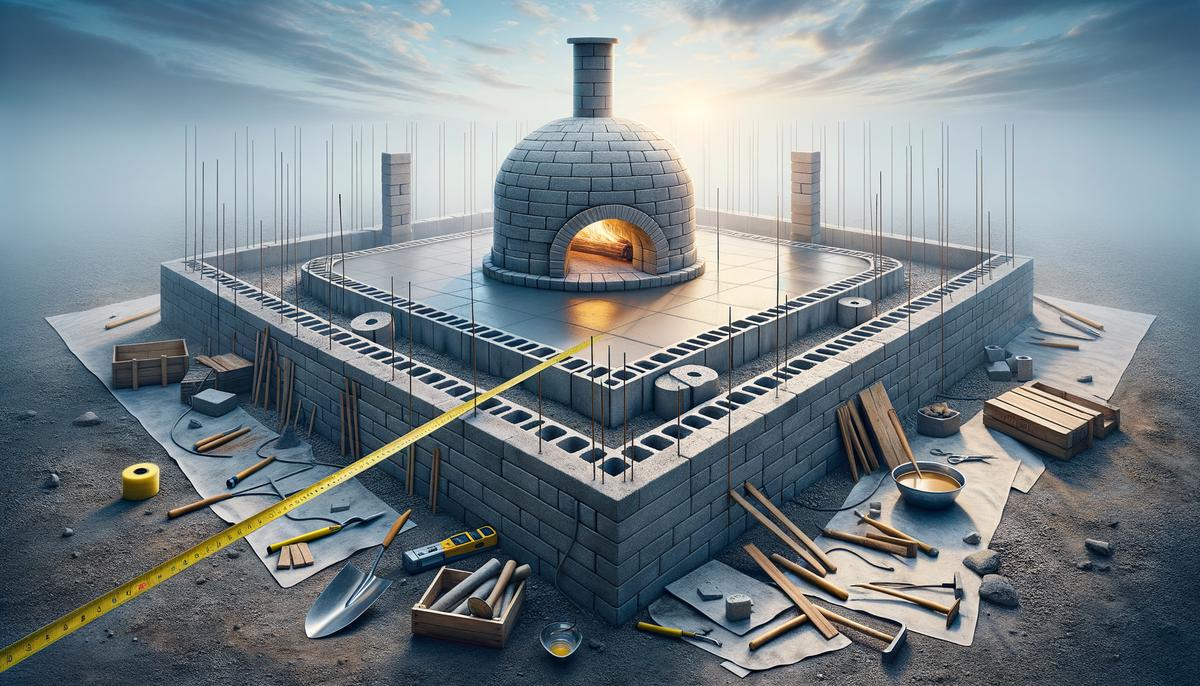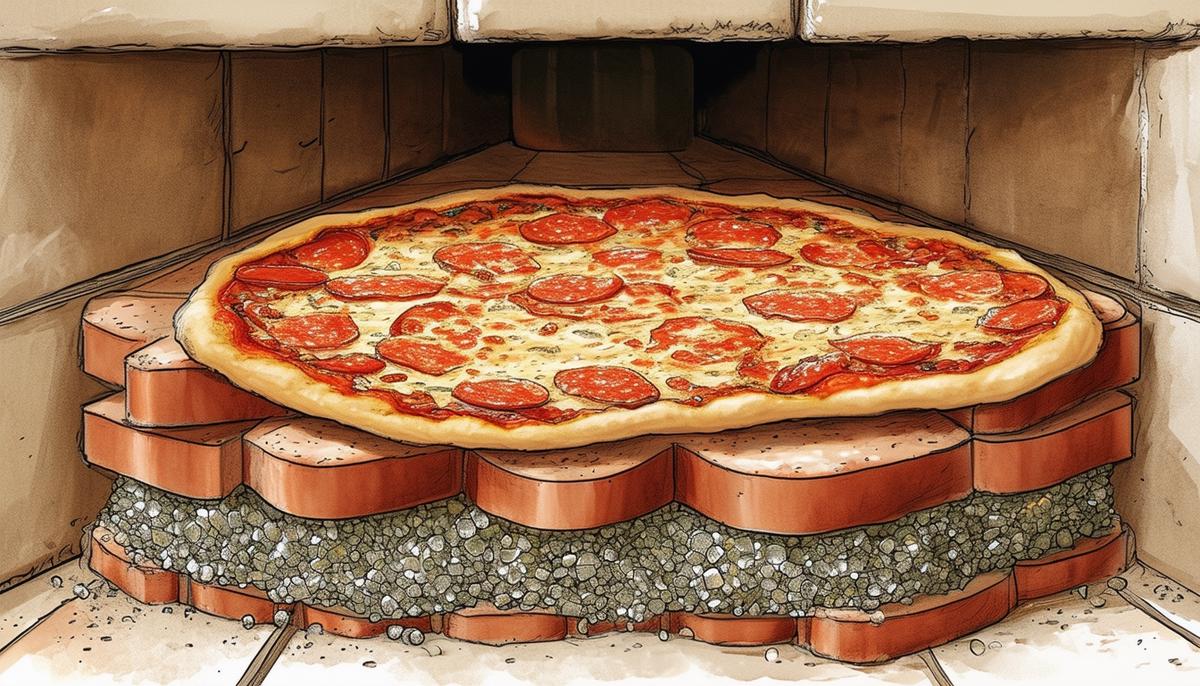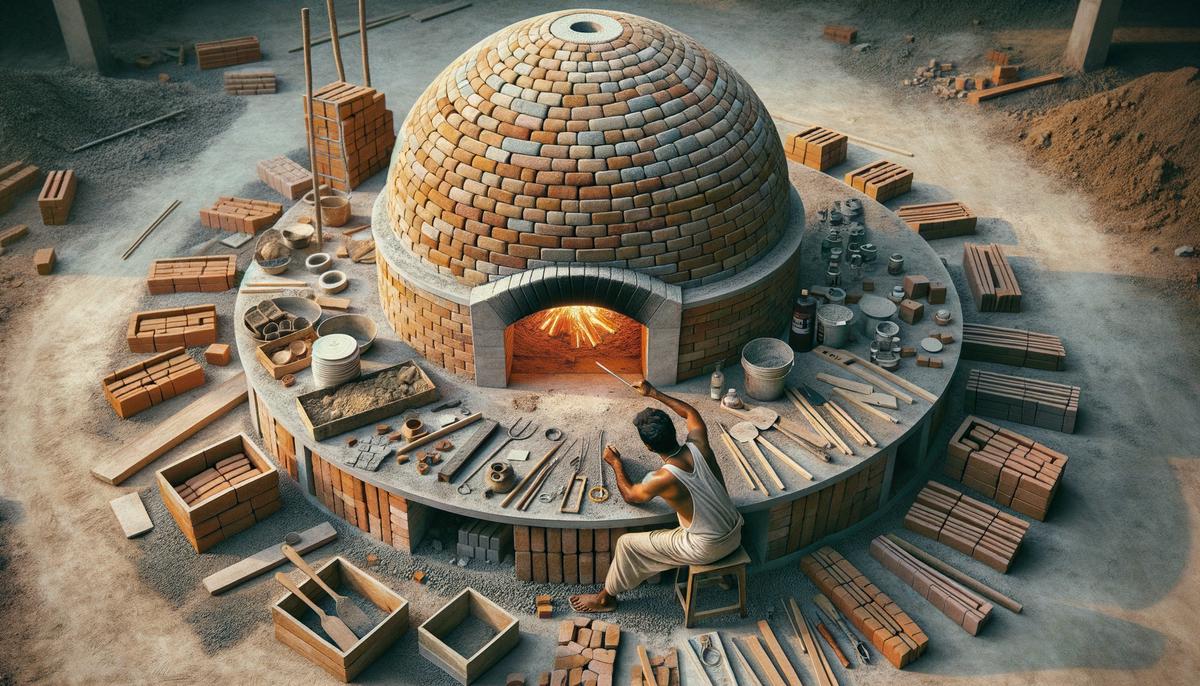Foundation and Base Construction
Begin with a sturdy concrete foundation. Level it carefully; an uneven base will result in an unstable oven. Use a string line to ensure everything's level. This base keeps the structure steady and prevents sinking, especially in shifting soil. The typical size for home ovens is about 4 feet by 4 feet, but adjust based on your yard and needs. Use pressure-treated lumber to frame the base.
Pour your concrete. It's similar to making a large patio. When pouring, eliminate air bubbles and smooth the surface with a float. Allow the concrete to set properly over a few days.
For the base, stack concrete blocks or bricks. Cinder blocks are quick and easy to work with, and can be filled for added stability. Lay your blocks in a square or rectangular pattern, aligning with your foundation shape. Mortar helps secure them. Check each corner to ensure they're straight.
If using bricks, fit them precisely. Aim for no gaps or wobbles. Consider a crisscross pattern for stronger support. Build to about 3 feet high for comfortable working height.
Fill the interior of your block base with gravel or rubble. Top it with a layer of concrete to create a smooth countertop. Ensure it's level—this is where your firebrick floor will rest.
Creating a void space for wood storage can be practical. Leave a gap in the blocks or bricks to form an arch or shelf space. Insert wooden forms to hold the arch's shape while the mortar dries.
Once your concrete top is fully cured, you can move on to the firebrick hearth. Lay down a thin layer of sand and use reclaimed bricks if available. Position them with minimal mortar between for better heat transfer. Gently tap each brick to ensure they're snug but not too tight to prevent expansion.

Oven Floor and Insulation
Start with firebricks for the oven floor. They're crucial for heat resistance and even distribution. Place them on your prepared surface, fitting tightly like a puzzle with minimal mortar. This close fit allows optimal heat transfer to your pizzas.
Insulation beneath the oven floor is vital. It minimizes heat loss and maintains steady cooking temperatures. Begin with a layer of glass bottles across the concrete surface. The trapped air inside acts as a barrier, preventing downward heat escape.
Add a mix of vermiculite on top. This lightweight, insulated material is easy to spread and fill spaces between the bottles. Aim for a couple of inches of coverage, depending on your oven's size. More insulation means longer-lasting heat.
With everything properly insulated beneath, add a final thin layer of sand. This helps level your firebrick hearth and allows minor adjustments.

Dome Construction and Finishing
Use refractory cement for the dome—it withstands the high temperatures a wood-fired oven produces. Start by laying your first course of firebricks in a circular pattern around your oven floor, angling each brick slightly inward to guide the dome's shape.
Mix your refractory cement for mortar. Carefully place each brick, ensuring a snug fit with minimal cement between. As you build up, lean each brick increasingly inward, mimicking an igloo's gradual curve. You can use a sand form inside as a guide or make a simple wooden template to shape each level.
For insulation, cover the entire dome exterior with ceramic blanket insulation. Wrap it tightly around the dome, securing it with chicken wire or metal lath. Apply a layer of vermiculite cement over the ceramic insulation for durability and weather resistance.
Finally, finish your dome with stucco or masonry render. Choose a finish that suits your style and resists local weather conditions. A clean finish looks great and protects against environmental wear.

- Denzer K. Build Your Own Earth Oven. Hand Print Press; 2007.
- Bortone G. The Art of Wood-Fired Cooking. Gibbs Smith; 2009.
- Miscovich R. From the Wood-Fired Oven. Chelsea Green Publishing; 2013.
